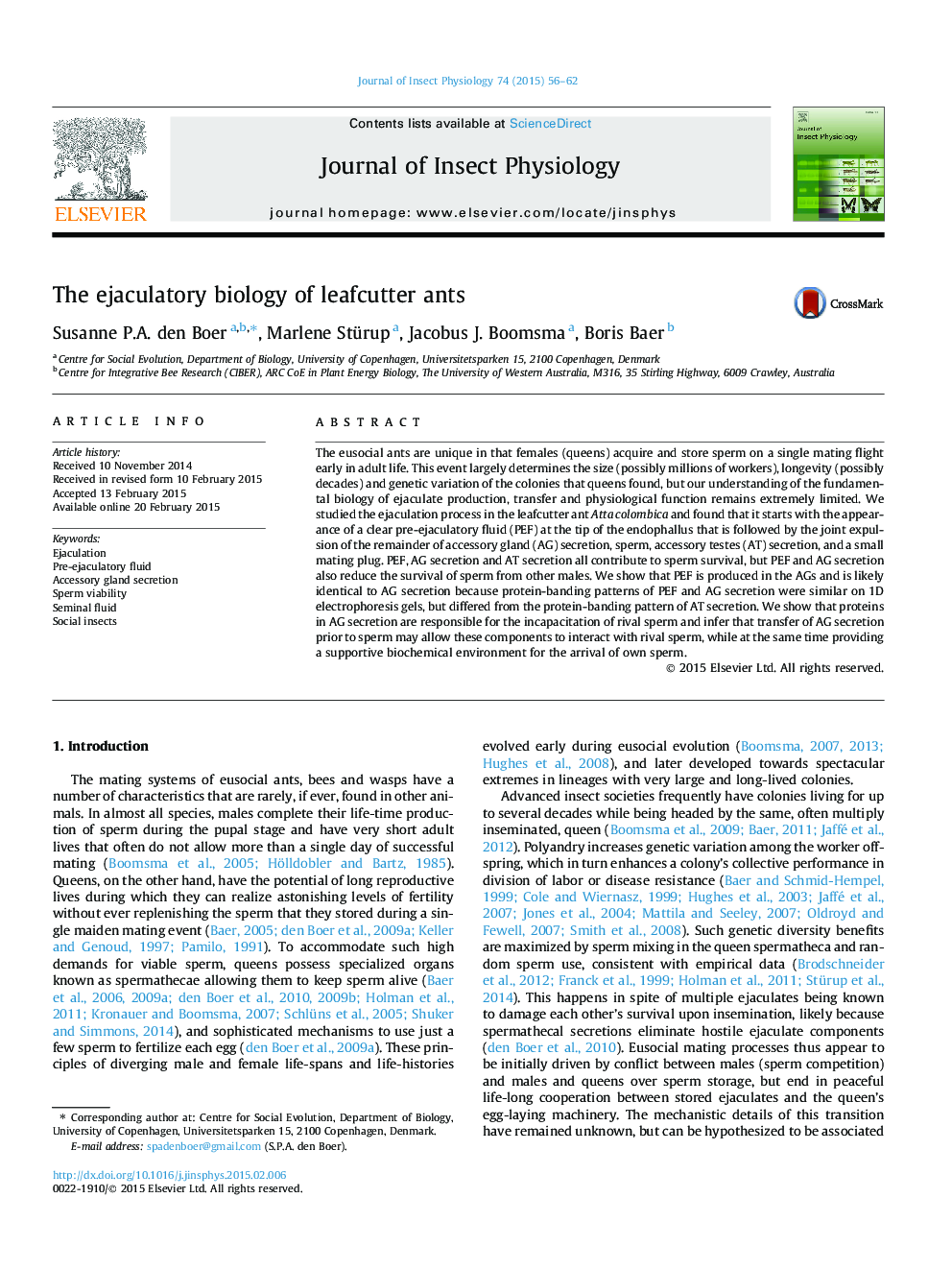| کد مقاله | کد نشریه | سال انتشار | مقاله انگلیسی | نسخه تمام متن |
|---|---|---|---|---|
| 2840393 | 1570996 | 2015 | 7 صفحه PDF | دانلود رایگان |

• We examined the male ejaculation process in the leafcutter ant A. colombica.
• Ejaculate components differ in timing of transfer, composition and activity.
• A male’s AG secretion is harmful to rival sperm, but AT secretion is not.
• Proteins mediate the harmful interaction for rival ejaculates.
The eusocial ants are unique in that females (queens) acquire and store sperm on a single mating flight early in adult life. This event largely determines the size (possibly millions of workers), longevity (possibly decades) and genetic variation of the colonies that queens found, but our understanding of the fundamental biology of ejaculate production, transfer and physiological function remains extremely limited. We studied the ejaculation process in the leafcutter ant Atta colombica and found that it starts with the appearance of a clear pre-ejaculatory fluid (PEF) at the tip of the endophallus that is followed by the joint expulsion of the remainder of accessory gland (AG) secretion, sperm, accessory testes (AT) secretion, and a small mating plug. PEF, AG secretion and AT secretion all contribute to sperm survival, but PEF and AG secretion also reduce the survival of sperm from other males. We show that PEF is produced in the AGs and is likely identical to AG secretion because protein-banding patterns of PEF and AG secretion were similar on 1D electrophoresis gels, but differed from the protein-banding pattern of AT secretion. We show that proteins in AG secretion are responsible for the incapacitation of rival sperm and infer that transfer of AG secretion prior to sperm may allow these components to interact with rival sperm, while at the same time providing a supportive biochemical environment for the arrival of own sperm.
Figure optionsDownload as PowerPoint slide
Journal: Journal of Insect Physiology - Volume 74, March 2015, Pages 56–62